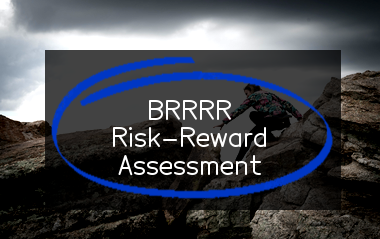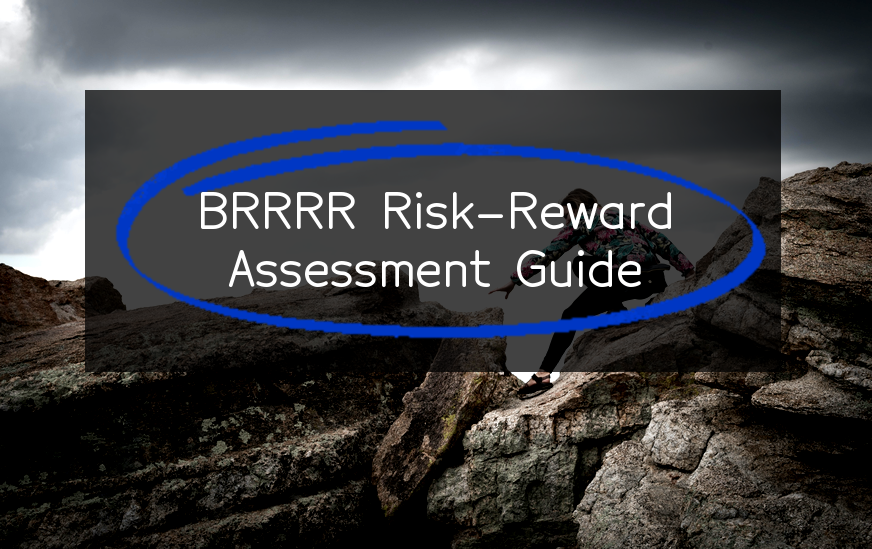The BRRRR method is a real estate investment strategy that involves buying a distressed property, renovating it, renting it out, refinancing it, and repeating the process. While the BRRRR strategy can be highly profitable, it also comes with potential risks and rewards that need to be evaluated before investing. Here's how to evaluate BRRRR risks and rewards:
- 1. Evaluate Location: Location is a key factor in any real estate investment. You should evaluate the location of the property and assess the neighborhood's demand for rentals, vacancy rates, crime rates, and potential competition.
- 2. Assess the Condition of the Property: You should thoroughly inspect the property to determine the extent of the repairs needed. This includes checking for foundation damage, roof leaks, outdated heating systems, and plumbing issues, among others. Get estimates from contractors to determine the overall cost of repairs.
- 3. Estimate Your Financing Costs: BRRRR strategy requires financing to buy and renovate the property. Evaluate your financing options and estimate the total cost of financing the property, including interest rates, points, and fees.
- 4. Evaluate Rental Income: Calculate the potential rental income based on the location and condition of the property. You can research comparable properties in the area to get an idea of rental rates.
- 5. Determine After-Repair-Value (ARV): After repairing and renovating the property, it's necessary to determine its ARV. This will give you an idea of the maximum amount you could refinance the property for after it's rented out. You can assess the ARV by looking at comparable properties in the area and consulting with a real estate agent or an appraiser.
- 6. Calculate Your Profit Margin: Determine your potential profit margin by subtracting your total expenses (including financing costs, repair costs, and rental costs) from the ARV. This will give you an idea of whether the property is a worthwhile investment.
- 7. Evaluate Your Risks: You should also evaluate the potential risks of investing in the property. These risks include market fluctuations, rental demand, and unforeseen repairs, among others.
In summary, BRRRR investment strategy comes with significant rewards, but also has potential risks that need to be evaluated before investing. To evaluate these risks and rewards, consider the location, condition of the property, financing costs, rental income, after-repair-value, and potential risks, among others.
Renovation Period
The renovation period is the time during which a property or building undergoes extensive reconstruction or improvement, generally for the purpose of upgrading its overall condition or making it more functional and attractive. Renovation periods can vary in length and scope depending on the scale of the project, the resources available, and the complexity of the work to be done. In some cases, renovations may involve minor cosmetic changes such as painting and new flooring, while in other cases it may involve major structural repairs or additions such as updating plumbing and electrical systems, installing new fixtures, or expanding living spaces. Renovation periods may be initiated by property owners for their own use or by property managers or developers for the purpose of enhancing the value and appeal of a property.
Renovation cost
Renovation cost refers to the expenses incurred in improving or refurbishing a building or its components. This includes the cost of labor, materials, permits, and any other expenses related to the renovation process. Factors that affect renovation costs include the scope of the renovation, the size of the building, location, complexity of the project, quality of materials used, and labor rates. Renovation costs can vary widely depending on the extent of the work needed and the level of finishes chosen. It is important to budget accurately for renovation costs to avoid overspending and to ensure that the renovation is completed within budget constraints.
Rehab management
Rehab management refers to the process of overseeing and coordinating the rehabilitation of individuals who have suffered from a health condition or injury. It involves the development of a comprehensive, individualized treatment plan to help patients recover and regain their function.
Rehab management includes a range of healthcare professionals, including physical therapists, occupational therapists, speech therapists, and other specialized therapists. They work together to create a personalized treatment plan based on the patient's needs and goals.
The rehab management process involves assessing the patient's physical and mental health, developing a treatment plan, implementing the plan, monitoring progress, and making modifications as necessary. The goal is to help patients achieve their maximum level of independence and improve their quality of life.
Rehab management may also include education and support for patients and their families to help them understand the treatment plan and the recovery process. It requires ongoing communication and collaboration between the healthcare team and the patient to ensure that the treatment is effective and meets the patient's needs.
Appraisal
An appraisal is an evaluation of the value, quality, or condition of a person, object or property. It is typically conducted by a licensed and certified appraiser who assesses the item or object through detailed examination, considering its age, condition, rarity, market demand, and other similar factors.
Appraisals are used in various contexts, such as real estate, insurance claims, taxation, estate planning, and art valuation. They provide an unbiased and objective opinion of the item's value, which is crucial in determining the fair market value, insurance coverage, or tax liability in the event of a loss or damage.
Overall, appraisals help individuals and businesses make informed decisions about their assets or items by giving them accurate and reliable information about the item's worth.
Time to rent
Here are some general steps to consider when it's time to rent:
- 1Determine your budget: Calculate your income and expenses to determine how much you can afford to spend on rent each month.
- 2Research the market: Look at rental listings online, in newspapers, or through real estate agents to get an idea of the available options and their average prices.
- 3Visit potential rentals: Schedule visits to potential rental properties to inspect them closely, ask questions, and take note of any necessary repairs or updates before signing a lease agreement.
- 4Review the lease agreement: Review the lease agreement thoroughly to understand the terms and conditions, including rent, security deposit, late fees, upkeep and maintenance requirements, and any additional charges.
- 5Sign the lease agreement: If you are satisfied with the rental property and the lease agreement, sign the lease and ask for a copy for your records.
- 6Move in: Coordinate with the landlord or property manager for the move-in date, and make any necessary arrangements such as moving companies, utilities, and insurance.
- 7Maintain the property: Take responsibility for maintaining the rental property in good condition, paying rent on time, and respecting the terms of the lease agreement.
Just one more thing: if you liked the article, please like us on social media and share this article with friends.



